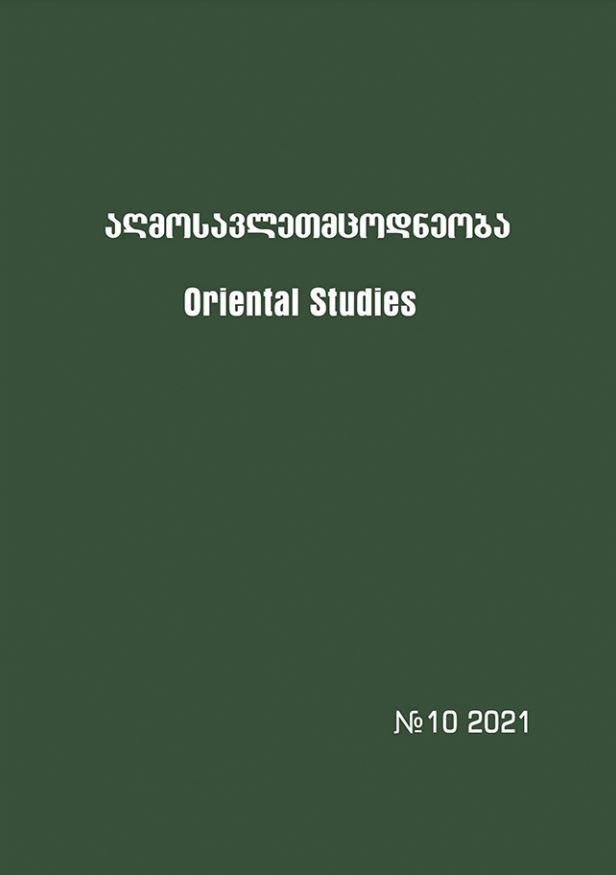Towards the Etymology of Avtandil and ispri in "The Knight in the Panther's Skin"
Main Article Content
Abstract
1. The paper deals with the etymology of Avtandil (the name one of the protagonists of “The Knight in the Panther’s Skin”). On the basis of critical
analysis of already existing etymological research in Rustvelology Studies proposes a new version of etymology of the name, namely, Avtandil is composed of two constituents: Avtan < Arabic أفضل]ʼafḍal] “the best, outstanding", and dil < دل]dil] of the Turkish origin meaning “language, tongue”. The meaning of
دل أفضل]ʼafḍal dil] > Avtandil (after dissimilation l > n in the first constituent) can be interpreted as following: "the eloquent, a great orator." Avtandil as the personal name, must be composed by Shota Rustaveli similar to the Arabic laqab and highlights the main personal features of its possessor (and eloquence of Avtandil in the poem is beyond doubt).
2. In “The Knight in the Panther’s Skin” the collocation isprita ghebulni ("colored by ispri") occurs when Shota Rustaveli uses it to express the emotional
state of the "Palace folk" of Melik Surkhav Palace after Nestan-Darejan made her escape. Traditionally, isfri is interpreted as Georgian iisperi wich means “violet”, as it is implied that this color was considered as color of mourning. In the paper supposition is presented that phonetic expression and contextual use of ispri allows to presume that it is originated from Arabic أصفر‘]aṣfar] – "yellow". The color yellow is usually perceived as negative color of physiological and psychological illness, in the Arabic-speaking community: اصفر]iṣfarra] ("to become yellow") express the meaning “to become pale”; similar perception of this color was familiar for Georgian society as well (cf. Georgian zapranis peri daedo – lit. "he was covered with tagetes (tagetes is yellow flower) color", i.e. turned pale, grow pale. Numerous examples of this connotation of yellow is confirmed in the literary works of middle ages. Consequently, Rustaveli's isprita ghebulni may be understood as "colored in yellow", i.e. turned pale.
